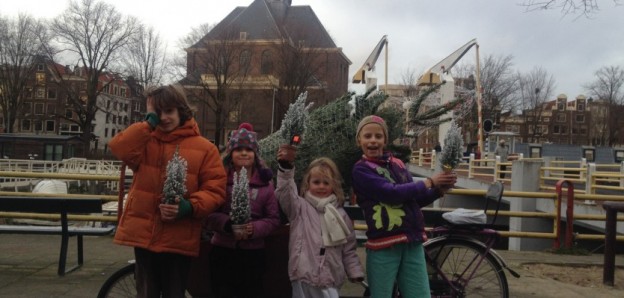|
This is the time of fast fashion. Clothes are something you wear and when you don’t like them anymore, they are thrown away. With a bit of luck they are brought to one of the charity recycle shops or put in one of the many recycling containers most countries have by now. My relationship with clothes is however different from most people. To me, clothes represent a certain time period or emotion for me. Who gave them to me; where I bought them; the amazing find in a second-hand shop or reliving the rush of a beautiful piece all over again. There are pieces hanging in my closet that I have owned for over fifteen years by now and I still wear them with great delight. I have a beautiful purple velvet jacket which seems indestructible and is made with such craftsmanship it will probably stay there for another fifteen years.
Now that I have children, I see they get attached to their clothes the same way I do. They have favourite pieces they like to wear and they feel even a sting of sadness if their favourite piece doesn’t fit any more. A piece which doesn’t fit anymore could go to another child. But what to do if there is a hole in a shirt or pair of jeans? My suggestion to my children used to be to go buy new ones. But instead of being happy, they would sulk. I would feel odd about their reaction until I realised that they felt attached to their garments as much as I did and suggesting buying new ones was somehow offensive to them. So I started mending clothes, even leggings, with nice patches and if a piece of garment was so worn out I would let them make something out of it for themselves or for their teddy bears. Of course it takes time to mend clothes, time we think we do not have. So I started doing it while they where playing or reading or simply hanging around. What happened was that they where really interested in my needle work. And started asking questions about fabrics, how clothes were made and who was making them. So before I knew it I was talking about big factories where women were making just the legs of a pair of trousers all day getting paid almost nothing. They were stunned about the process and looked differently at their clothes once again. Somebody far far away makes it. And we just wear it and throw it away? It didn’t make sense to them. So by just simply mending clothes I ended up with education in the broadest way. They learned and still learn to make something themselves, we discussed different types of fabric. And by now the three oldest are able to knit a simple scarf. We touched the subject of unfair worker’s conditions. And what you as a consumer can do about it, by really thinking about what we buy, from whom and where. I feel proud of them, but I am also amazed by their ability to question things we take for granted. By now they keep me sharp by simply asking questions and being curious. Questions like: “Mom who made my pair of trousers and where were they made?” Questions we all should ask ourselves more often. Doing so will make the makers, mostly women and children, more visible and that is needed to sow seeds of empowerment for both the makers and those of us who wear the clothes. So, that’s why I keep on mending my kids’ clothes and teaching them to do it too. Elisa Huijsman is an entrepreneur in baby and childrens clothing running her own label UmpaLumpa.nl. She is a SPINNA advocate, believing empowering yourself and others is something you can do 365 days of the year.
0 Comments
Leave a Reply. |
Archives
August 2018
Categories
All
|


 RSS Feed
RSS Feed
